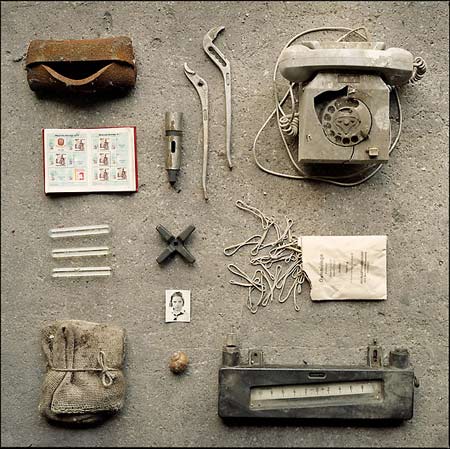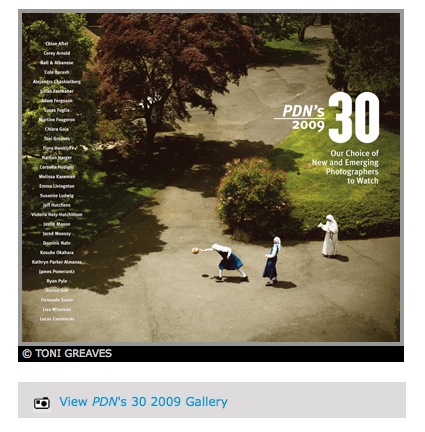
Are you a famous artist? Are you broke? Well, we can help.
In yesterdays New York Times, there is an article about a couple of businesses that are basically pawn brokers for Art World.They basically name names while at the same time saying they are confidential. One of the biggest names to use one of these brokers is Annie Leibovitz, who borrowed over $15 million dollars, and gave up her negatives and "future work" as collateral. You are in deep when you have to give up "future work".
It's worth a read. See it here.

B. Ulrich’s Dark Stores, Ghostboxes and Dead Malls
Buddy and fellow member of the PWFIPDTBETROITFOHTFT Club (People Who Find Themselves Increasingly Pessimistic Despite Their Best Efforts to Remain Optimistic In The Face of Humanity’s Terrible Fucking Terribleness), Brian Ulrich, has finally unleashed his new work to the public, Dark Stores, Ghostboxes and Dead Malls via a Time.com slideshow.Check it out. Seriously! Relevant Work!
Artspeak / Statements
An artist friend's advice to me on statements once was "Write it as if you were telling a good friend about the work for the first time"
From an article by Dan Fox titled "Serious Business: What does it mean to be a professional artist" over at Frieze:
Working for a contemporary art magazine, I get sent a vast amount of press material each day, almost all of which employs a strikingly similar tone of voice. Most common is the one of academic solemnity infused with a barely veiled aggression, as though art were engaged in some cultural ‘war on terror’. Words such as ‘forcing’, ‘interrogating’ or ‘subverting’ occur with incredible frequency. Boundaries are ‘broken down’ and ‘preconceptions challenged’ so often as to make subversion and radicality seem like a mandatory daily chore rather than a blow to the status quo. They perpetuate old-fashioned notions, such as that of the artist visionary liberating the masses from mental enslavement by bourgeois values. Overuse has made these words sound strangely toothless, for what’s at stake in the art is often less important (but not necessarily without value) than the language suggests.
This may seem like nit-picking when global capital is collapsing around our ears. Sure, the follies of art-speak are easy to laugh at, but often criticism of it begins and ends with a dismissive chuckle – which ignores profounder problems. Why should academic terminology be the default vehicle for discussing art? Why is there such an emphasis on newness, schism and radicality? Even when the art itself may be enjoyably throwaway, language pins it to deathlessly auratic registers of exchange. This suggests a subliminal fear that, if the subject in question is not talked up as Big and Culturally Significant, then the point of fussing over it in the first place might be called into question, bringing the whole house of cards tumbling down.
Read the whole piece here.
Fritz Fabert
PDN 30 Photographers To Watch- 2009
PDN just published their annual list of 30 photographers to watch. See it here or go get a copy on the newsstand. This annual list has always been something worth checking out for photo editors looking for new talent and new approaches to old ideas. What makes this list great is there’s no entry fee. Someone with influence nominates you and then from the pool of nominees the editors pick 30. Some years the list is stronger than others but it really depends on the pool of people they are pulling from.
The only gripe I have with this and all the other contests out there as far as this goes is with the way they present the work online. Photo editors have been using the internets for quite awhile now so why don’t they take the lists of photographers and present it in an easy to use format. Getting published in the magazine is all well and good but the real value is in the potential to land jobs from it.
I’ve decided to do it for them this one time so you can see how useful it might be. I added my own keyword descriptions just to help people quickly find what they’re looking for although I need to find a better way to parse the term “Fine Art” and documentary or photojournalism because those terms cover too much ground. I would add reference photos but I think PDN might not like that.
New York
Kathryn Parker Almanas- Clinton, NY [Fine art interior/still life]
Lucas Foglia- New York, NY [People in landscape with a fine art influence]
Wendy Ball and Dara Albanese- Brooklyn, NY [Traditional travel]
Martine Fougeron New York, NY [Fine art youth lifestyle]
Chiara Goia Brooklyn, NY [Color documentary with a fine art influence]
Flora Hanitijo- Brooklyn, NY [Dense color, fine art people and places]
Cornelia Hediger- New York, NY [Fine art self portrait interiors]
Victoria Hely-Hutchinson- Brooklyn, NY [Fine art color people and places]
Jared Moossy- New York, NY [B/W and color photojournalism]
James Pomerantz- Brooklyn, NY [Color documentary]
Fernando Souto- Brooklyn, NY [B/W Documentary]
Lucas Zarebinski- New York, NY [Food and product still life]
California
Chloe Aftel- Los Angeles, CA [Lifestyle with a snapshotty/polaroid aesthetic]
Cole Barash- Oceanside, CA [Snowboard sports and lifestyle (Caution: Music)]
Melissa Kaseman- San Francisco, CA [Fine art objects, people and places]
Lisa Wiseman- San Francisco, CA [Fine art people]
Oregon
Corey Arnold Portland, OR [Rich color documentary with a fine art appeal]
Toni Greaves- Portland, OR [Color documentary with a fine art influence]
Argentina
Alejandro Chaskielberg- Capital Federal, Argentina [Fine art narrative with rich color and shallow depth of field]
Emma Livingston- Buenos Aires, Argentina [Fine art color landscape]
Australia
Adam Ferguson- Newport, Australia [Color photojournalism]
Germany
Julian Faulhaber- Dortmund, Germany [Fine art graphic interior and exterior with patterns and everyday subjects]
Susanne Ludwig- Hamburg, Germany [Fine art people and empty industrial interiors and objects in patterns]
Ohio
Nathan Harger- Cleveland, OH [Graphic industrial fine art]
Washington DC
Jeff Hutchens, Washington, DC [Color and B/W documentary with a modern aesthetic]
Pennnsylvania
Justin Maxon- Philadelphia, PA [B/W and color photojournalism]
Egypt
Dominic Nahr- Cairo, Egypt [Color photojournalism]
Japan
Kosuke Okahara- Yokyo, Japan [B/W documentary]
China
Ryan Pyle- Shanghai, China [Color documentary]
Singapore
Darren Soh- Singapore, Singapore [Traditional color industrial and modern natural landscape]
Sylvia White Gallery
By Sylvia White
To many artists, being an artist isn't "real" unless you have a gallery to exhibit your work. Although there are several other options available to artists in terms of showing and selling their work, it seems, for some, there is just no substitute for getting gallery representation. To this end, many artists are willing to bend over backwards, do insane things, make ridiculous claims, and, in short, embarrass themselves. The truth of matter is, not all artists are ready for galleries, nor are galleries, necessarily, the best choice for many artists. Especially in these hard economic times, the last thing on most gallerists minds, is acquiring new artists. Much of my time is spent helping artists develop a realistic set a goals, and then a game plan to achieve those goals. Nevertheless, there is always that rogue artist, wanting to strike out on their own, thinking this time it will be different. They muster up the courage to start approaching galleries before they are ready, and without regard to common sense gallery protocol. If you recognize yourself as that rogue, or you know another artist that is, please forward this article to them.
Read List Here

